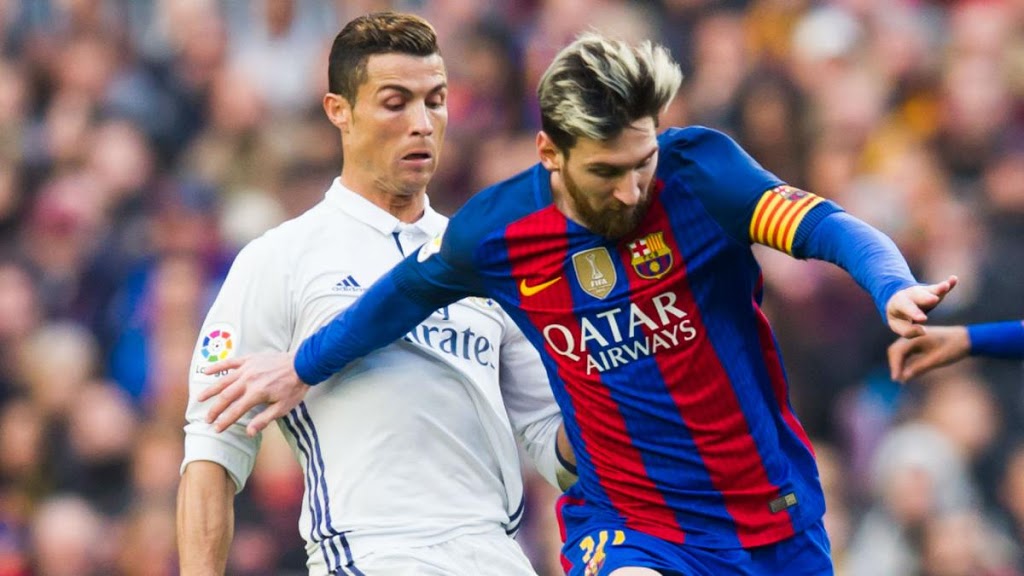
Football, as the beautiful game that it is, constantly evolves. The beauty of the sport is the diversity in methods and ideas to winning.
Therefore, the winger role has been re-thought over the years.
Goal machines Cristiano Ronaldo and Lionel Messi effectively changed the perspective of a winger. The superstars who have won 11 of the last 12 Golden Ball awards between them completely changed the landscape of the winger, with their enormous scoring records proving that the central strikers do not always have to bear the goalscoring burden.
Playing the role of inverted wingers where they are positioned on the opposite side of their stronger foot. Ronaldo and Messi have conquered the role, registering goals and assists for fun as they chased down each trophy and individual award.
Over the past decade, the conception of a winger has gone from a perpetual dribbler and crosser to an inside forward/playmaker who tends to create play with diagonal passes or take shots at goal.
Thus, technically superior players are deployed as inverted wingers, contrary to the tricky winger of the old-fashioned 4-4-2 system whose primary duty was to dribble and outpace his opposing fullback to supply crosses into the box using his stronger foot.
The modern-day winger possesses sound technical qualities, speed, dribbling, pinpoint passing, creativity and an eye for goal.
 |
| Robben and Ribery; Bayern’s lethal duo of the 2010s |
Bayern Munich duo Arjen Robben and Franck Ribéry also made up a devastating pair of inverted wingers in the last decade. Nicknamed Robbery, both players shot the Bavarians to Eight Bundesliga titles and the Champions League in ten years playing together.
Some managers also allow their wingers free roles depending on the tactical approach which allows them to occasionally float infield or switch sides with the opposite winger to create different scenarios and stretch the fullbacks.
The inverted winger is so common these days that you rarely find a left-footed winger on the left-wing and vice versa. Although a few exceptions like Manchester City’s Leroy Sané and Burnley’s Dwight McNeil who has established himself as one of the Premier League’s brightest young talents despite being a traditional left-footed left-winger.
READ ALSO: HOW GASPERINI CREATED ATALANTA’S GOALSCORING MACHINE
COUTINHO & ERIKSEN: REMINISCING AN UNHERALDED ERA OF PREMIER LEAGUE BRILLIANCE
Whilst it betrays the genius of the crossing ability of David Beckham, Gareth Bale was utterly transformed by the innovation of inverted wingers as he was converted from a marauding left-back to a devastating right-winger by then-Tottenham boss Harry Redknapp; before securing a world-record move to Real Madrid.
For the inverted wingers to flourish, their off-the-ball movements to create as well as attack spaces in the box is key.
A left-footed right-winger would naturally cut in on his left foot and with a full view of the goal, look to supply in-swinging crosses to the far post (where his opposite winger can take a shot on target with a first touch on his right side) or curl one into the goal, and vice versa. Mo Salah’s marvelous goal last season against Chelsea as well as ‘the Robben-move’ easily come to mind.
The modern-day winger primarily operates in the half-space (the pocket of space between centre back and fullback), this allows them to pin opposition fullbacks onto their weak side and gives their own fullback license to overlap high and wide, creating a two-pronged two v one attack. Salah and archetypal modern-day fullback Trent Alexander-Arnold regularly create this scenario for Liverpool; when the Egyptian drops a shoulder looking to exploit space inside, the young fullback stays in his wide position waiting for a pullback that countless ends up with a delicious cross.
 |
| Salah and Alexander-Arnold have wreaked havoc down Liverpool’s right channel. (Oli Scarff/AFP) |
Par for the course fullbacks now have attacking responsibilities to maintain the width of the pitch and offer that specialist whipped cross a natural foot brings.
This tactical innovation has turned the widemen into supporting strikers, with the onus on wingers to produce as much as the centre-forward.
Furthermore, some managers deploy a centre-forward on the wings for varied reasons. Pierre Emerick-Aubameyang has often played on the left for Arsenal since Arsene Wenger left, there, he combines his electric pace and killer instinct to do damage for the Gunners, scoring 20 goals this season after sharing the Premier League Golden Boot last season. Mario Mandžukić played on the left-wing for Juventus in 2016/2017 and Romelu Lukaku on the other side for Manchester United with the aim of acting as a wide target man to dominate the fullback and create space for their teammates.
As in every other position, the role of the winger is now preferred in a certain way.
Pertinently, it has helped unlock the dynamics of modern-day attacking football.
Advertisements
Bolu Alabi-Hundeyin
April 28, 2020

